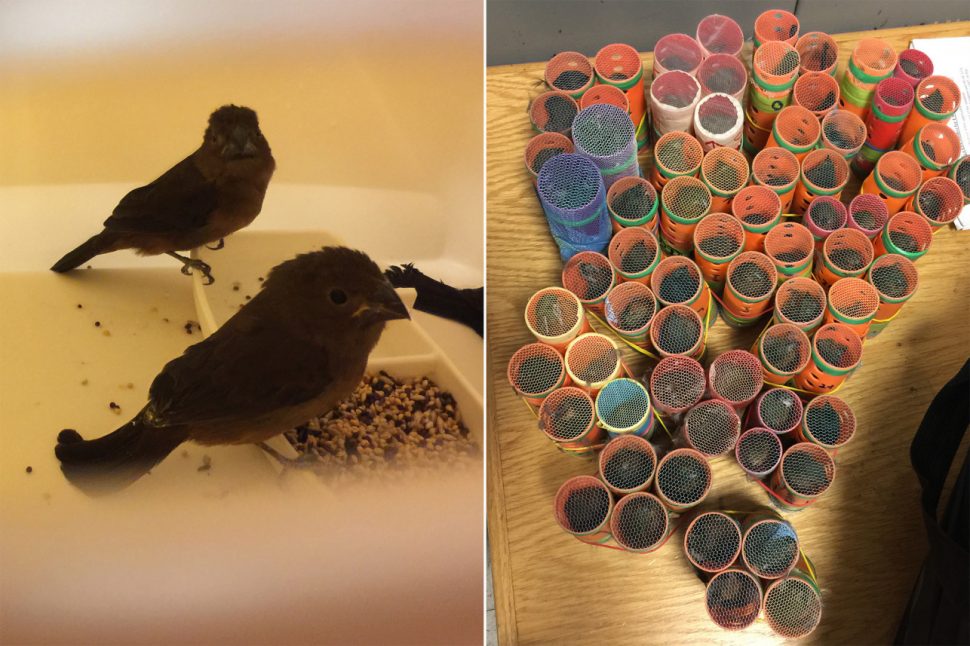Police are unable to locate the individual who is accused of smuggling 70 live finches inside hair rollers from Guyana into the US and who was later deported from that country.
Crime Chief Lyndon Alves related to Stabroek News that investigators are having difficulty in locating the individual. The man provided two different addresses to immigration authorities and checks made proved futile, he said.
“We know of the smuggling and an investigation has commenced to determine where and how security was breached,” he said, when asked if a report was made to the police. Alves said that he is unable to comment further as it is unclear to him what transpired during the check-in period of the passenger, and how he was able to exit the airport upon his return.
Meanwhile, spokeswoman for the Cheddi Jagan International Airport, Aneka Edwards told Stabroek News that their investigations are still ongoing. She said that they are still to determine where security was breached. The curlers should have been a red flag for the security and custom officers processing the passenger for the flight, she said.
Like Chief Executive Officer of the airport Ramesh Ghir, Edwards too said that they learnt of the smuggling through the press and it caught them by surprise.
Earlier this month, the New York Post reported that federal authorities busted a Guyanese man at the John F. Kennedy International Airport in New York when he tried to enter the country with the birds. The man, who was not named, had just arrived at the Queens airport on a flight from Georgetown on December 8 when US Customs and Border Protection agriculture specialists stopped him.
During the course of inspection, the specialists discovered 70 finches concealed in orange hair rollers inside a black duffel bag. The traveler was not admitted to the US and was instead returned to Guyana, a Customs and Border Protection spokesman said.
The report said that the birds were turned over to the United States Department of Agriculture’s Veterinary Services.





